
Today, after a long period of photographic abstinence caused by the widespread coronavirus outbreak in Alsace and the associated lockdown, I am once again presenting a “new” lens, the Tokina AT-X SD 150-500 mm f/5.6. Unfortunately, information about this lens is very scarce on the internet, and it seems that the website of the notorious Ken Rockwell provides the lion’s share of it. But back to the Tokina AT-X SD 150-500 mm f/5.6. This is a representative of the first generation of “Advanced Technology” lenses, which was later replaced by the AT-X Pro line. According to available sources, the lens entered the market in the second half of the 1980s and was then discontinued at the beginning of the new millennium. Other extreme telephoto zoom lenses with the same or similar focal length ranges were also launched in the 1980s: Minolta MD and MD APO 100-500 mm f/8, Canon FD 150-600 mm f/5.6 L, Sigma APO 100-500 mm f/5.6-8, Tamron SP 200-500 mm f/5.6, Zoom Nikkor 180-600 mm f/8 ED, and Vivitar/Soligor 120-600 mm f/5.6-8. All of these lenses vied for the favor of sports, wildlife, and press photographers, and some were already equipped with special glass to correct the secondary spectrum, which is particularly disturbing at longer focal lengths. This was also the case with the Tokina AT-X SD 150-500 mm f/5.6, which has at least one element made of SD (super-low dispersion) glass.
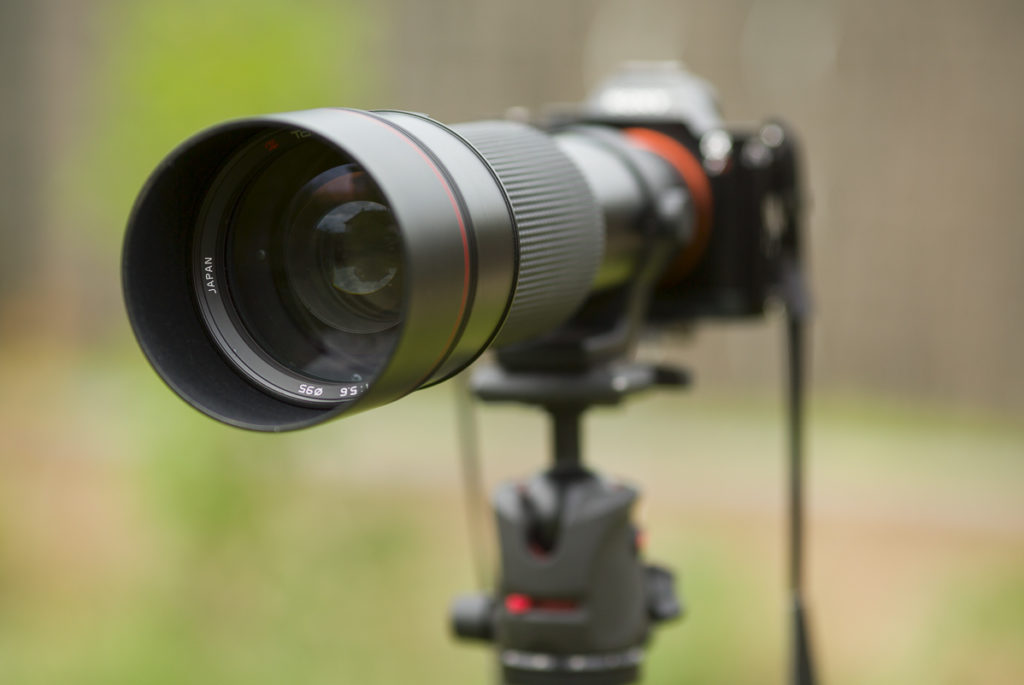
Like most Tokina lenses from the past, the AT-X SD 150-500 mm f/5.6 is superbly crafted: all parts are made of metal, the distance adjustment ring has exactly the right amount of resistance for precise adjustment, and the “zoom creep,” i.e., the slipping of the combined adjustment ring for focus and focal length in the vertical position, is kept within acceptable limits. There is also a locking screw to prevent subsequent changes to the two parameters. The distance adjustment ring extends beyond infinity, presumably to compensate for temperature fluctuations. With my inexpensive Chinese adapter (Olympus OM – Sony FE), however, the infinity setting is very precise at all focal lengths, meaning the lens is perfectly parfocal.

The aperture ring clicks audibly into place, between f/5, 6 and f/8 well as f/22 and f/32 in full steps, and otherwise in half steps. However, this is far from ideal, as with a lens like this, you usually adjust the aperture by feel and sound. The 360° rotating tripod ring is permanently attached and can be locked in place with a locking screw. There are small markings on the barrel every 90°, which makes it easier to adjust from horizontal to vertical and vice versa. A filter drawer accommodates screw-in filters with a diameter of 35.5 mm. Unfortunately, due to the monumental front lens, the front thread measures an impressive 95 mm and rotates with the distance setting (no straight guide). Incidentally, the length of the lens does not increase with increasing focal length, while the distance setting extends the front tube by 2.5 cm. The built-in lens hood is a little too short (5 cm) to do its job efficiently.
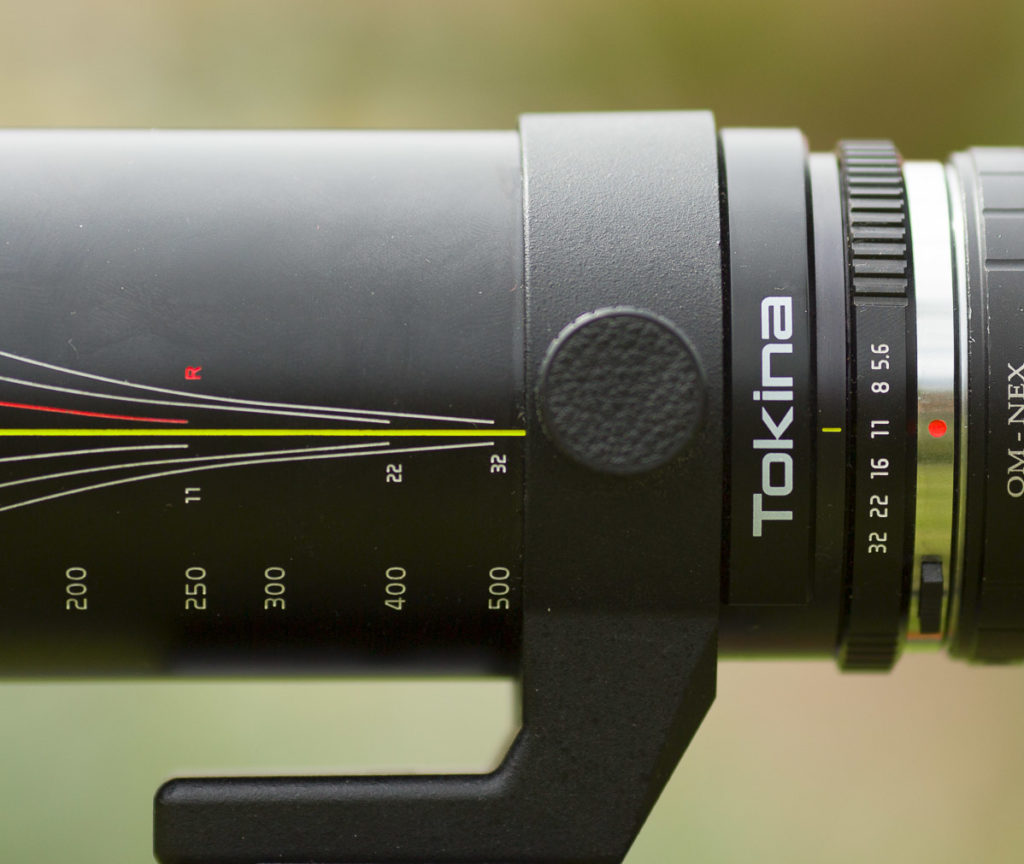
Of course, with its dimensions (length 31 cm and weight 2.2 kg), the lens is not particularly suitable for handheld use, even though this might possible for a short while. However, the AT-X SD 150-500 mm f/5.6 is probably better suited to a stable monopod or tripod.
To be honest, I didn’t have high expectations regarding the image quality of this lens. At the end of the 1980s, the French magazine “Chasseur d’images” published several posters with earlier published lens tests, and most of the super-telephoto zoom lenses at the time did not perform particularly well. In terms of image quality, the lenses from Canon (FD 150-600 mm f/5.6) and Sigma (APO 100-500 mm f/5.6-8) were ahead of those from Tokina (AT-X SD 150-500 mm f/5.6) and Tamron (SP 200-500 mm f/5.6), and the testers wrote that the Tokina lens had decreasing sharpness with focal length (good at 150, satisfactory at 300, and adequate at 500 mm) and only mediocre correction of color errors. However, I had purchased the lens for a song as part of an Olympus OM kit, so I was naturally willing to take the risk of ending up with a lemon.

However, the lens is much better than expected. Vignetting is only visible at longer focal lengths, and I haven’t noticed any unpleasant distortion so far. The susceptibility to stray light is also not nearly as bad as photography « guru » Rockwell claims (he talks about a single-layer coating, which is utter nonsense)
However, spherical aberration is noticeable at open aperture and all focal lengths, especially at shorter distances. But this is also a benefit in terms of bokeh, which appears exceptionally soft in the background. The slight softness at open aperture disappears at f/8, and the AT-X SD 150-500 mm f/5.6 then achieves its best performance at f/11.

Below is a series of tests at infinity, shot with the Sony A7R on a tripod using the 10-second self-timer delay at ISO 100. The camera was focused on the clock face of the church tower using maximum magnification. The images were sharpened using only the standard settings in Camera Raw, chromatic aberrations remaining uncorrected. However, the latter are very moderate and can be easily controlled in Camera Raw. After automatic correction, they disappear almost completely. Please note that these images show almost unsharpened sections at 200% magnification, the final results being much better and sharper in real life.
150 mm

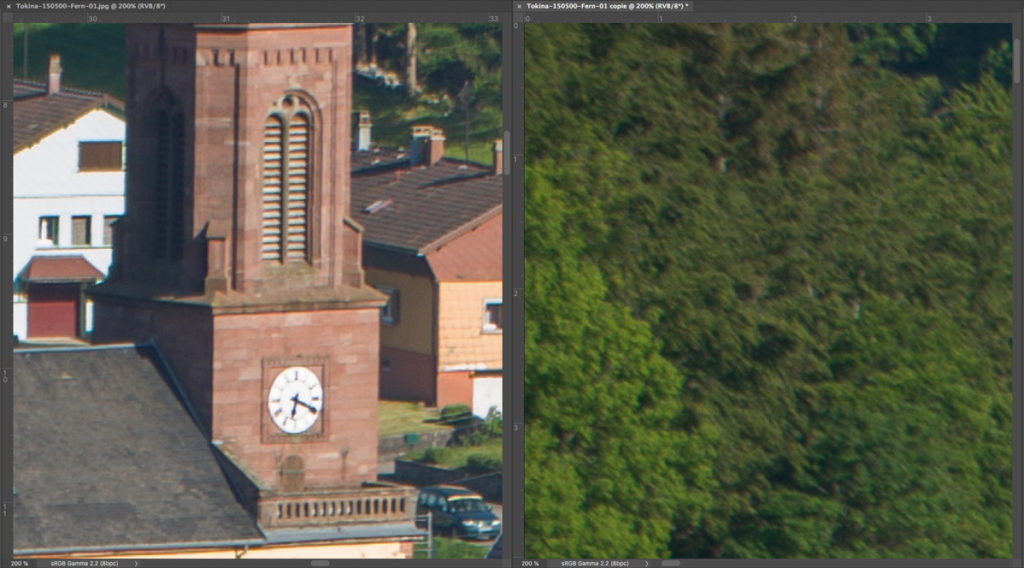
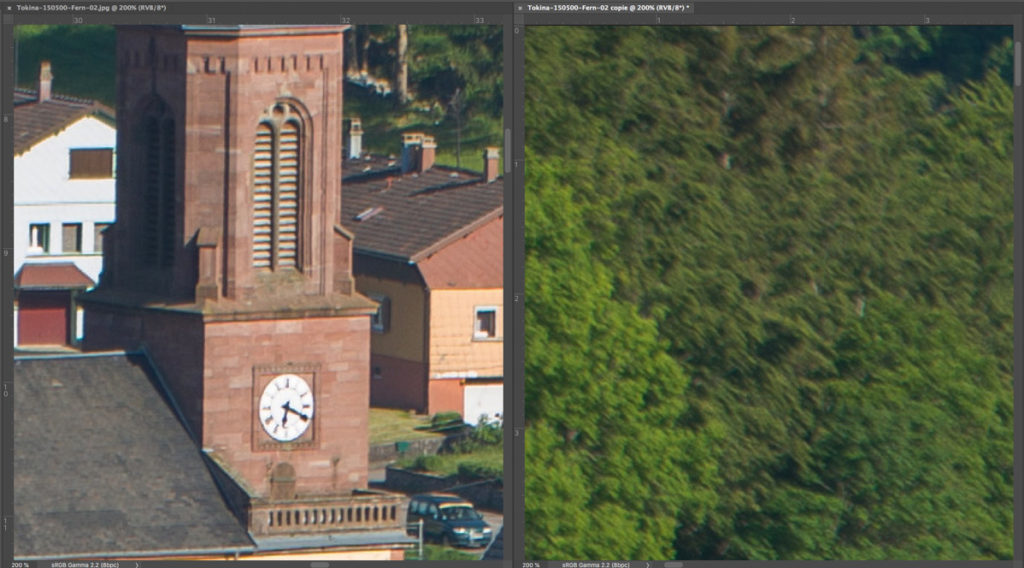
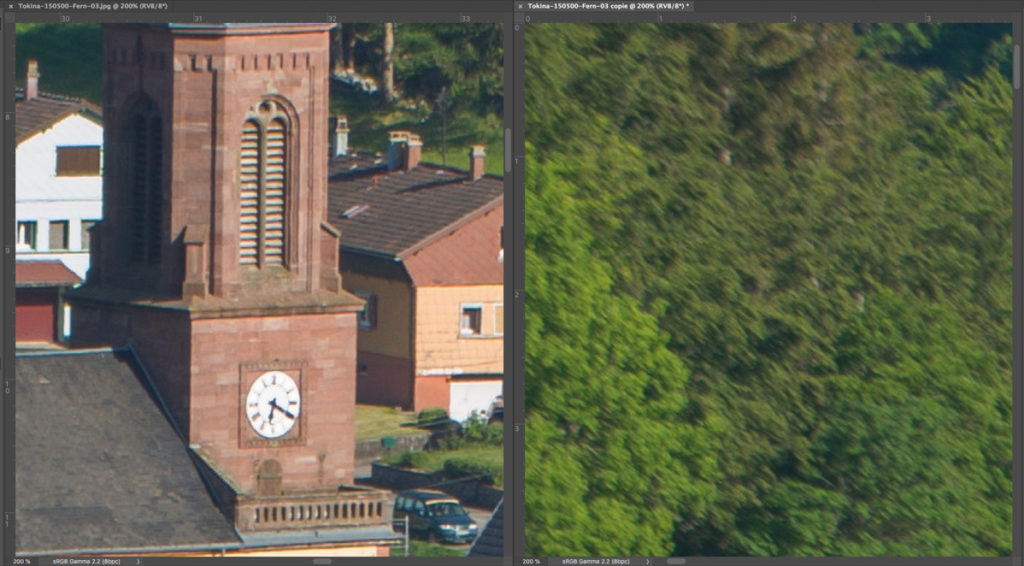
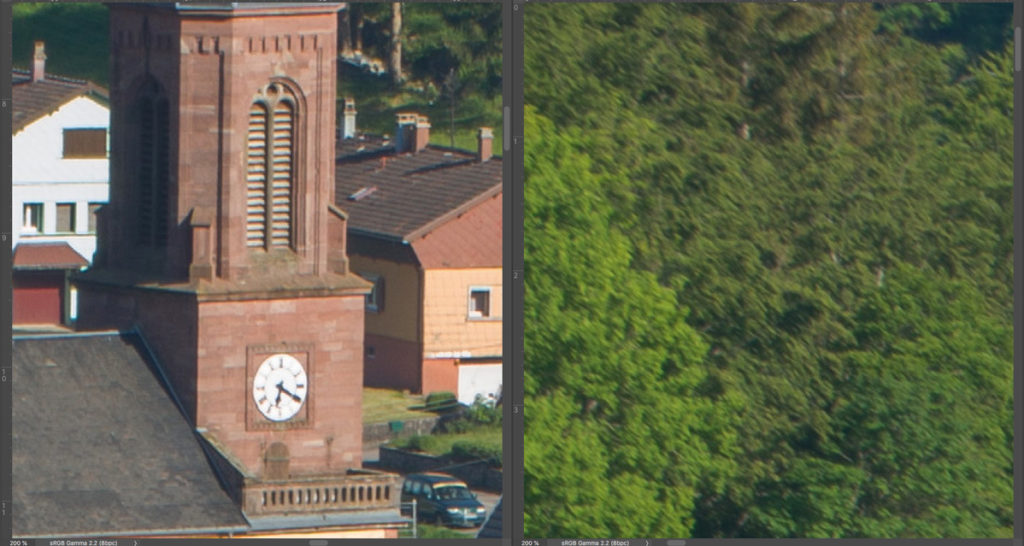
300 mm

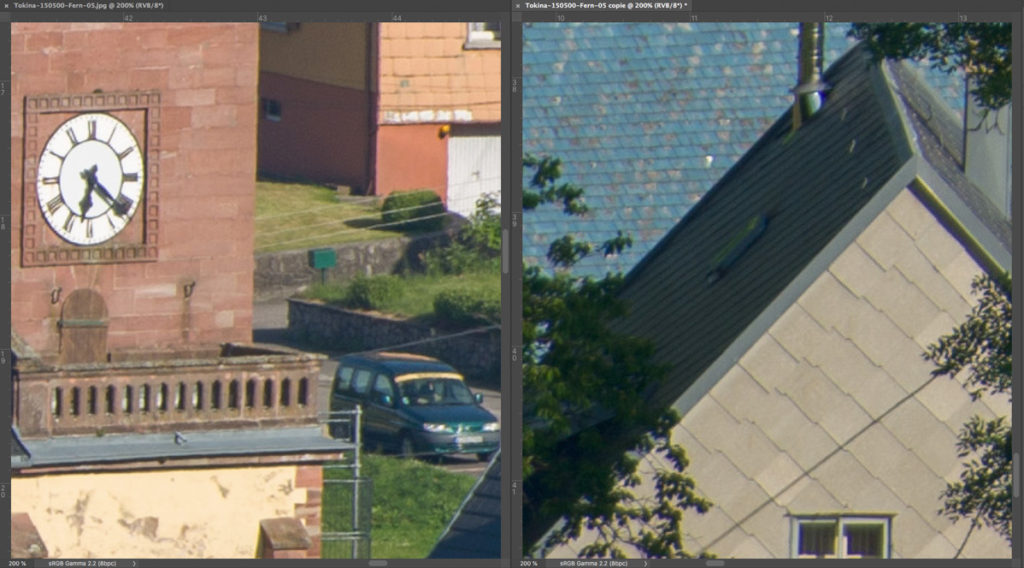
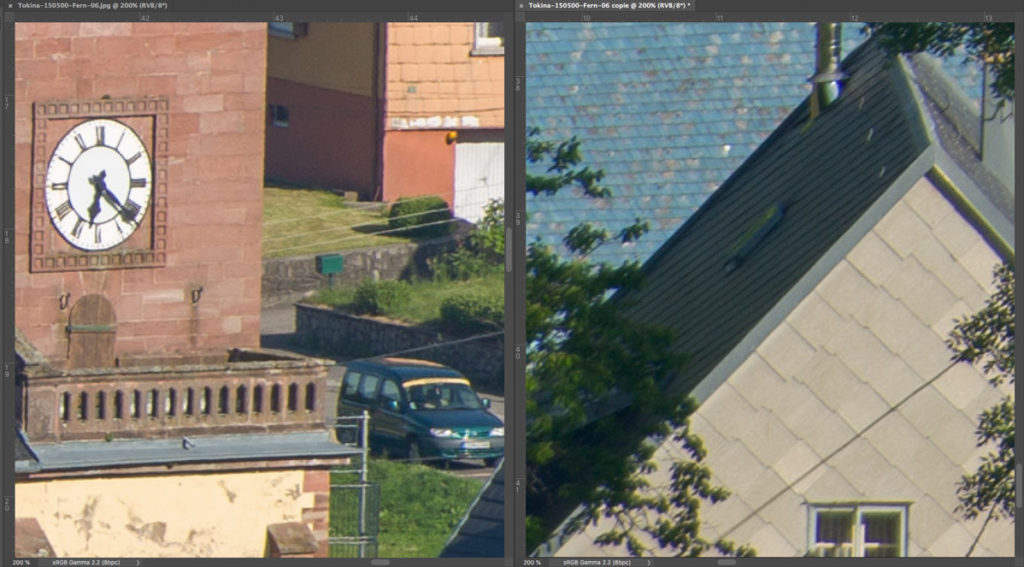
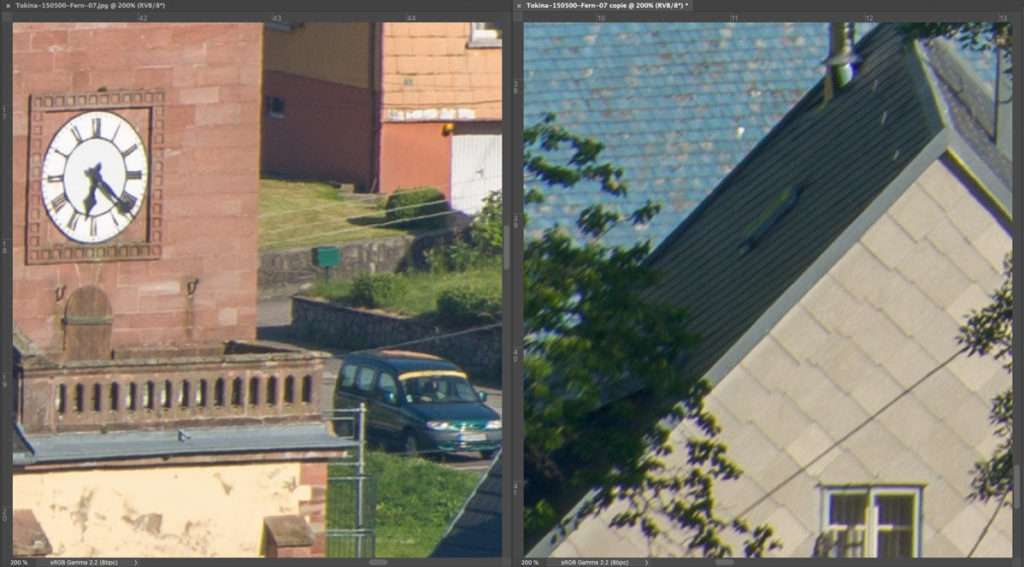

500 mm


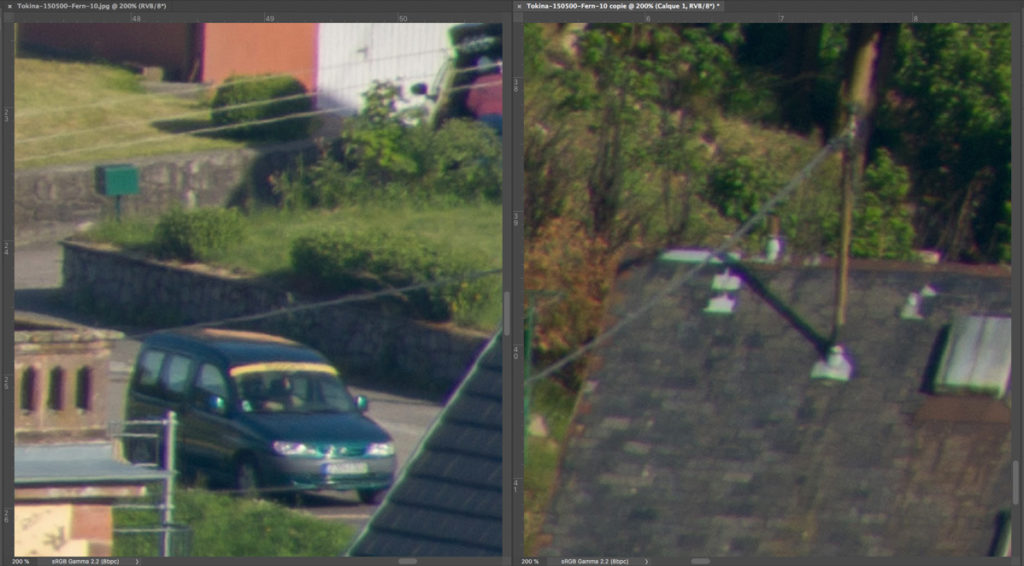

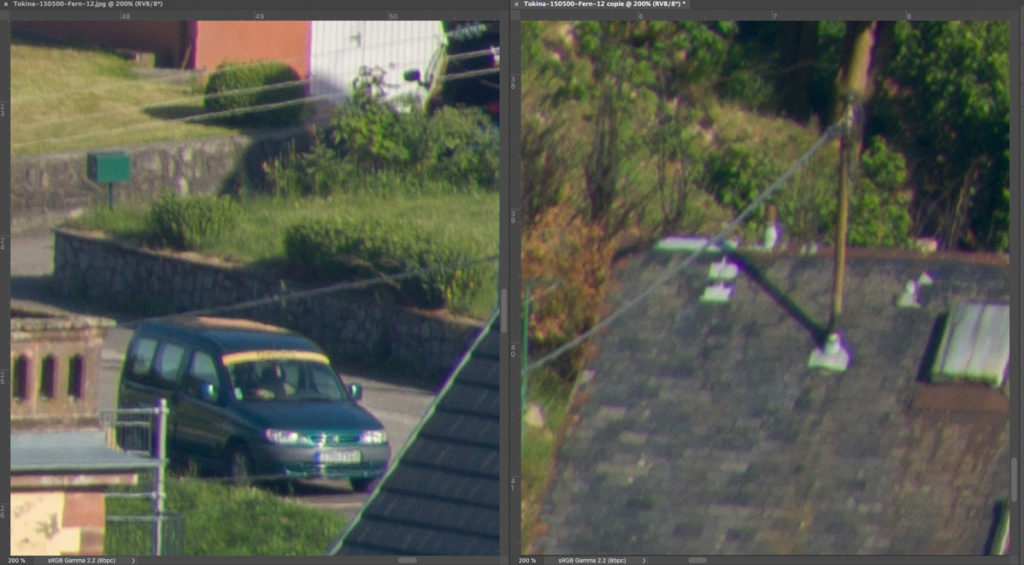
Let’s continue with a few other sample photos taken at shorter distances, all of which have been corrected for chromatic aberrations and sharpened. As with the other images, the camera used was a Sony A7R (36 Mpix.)



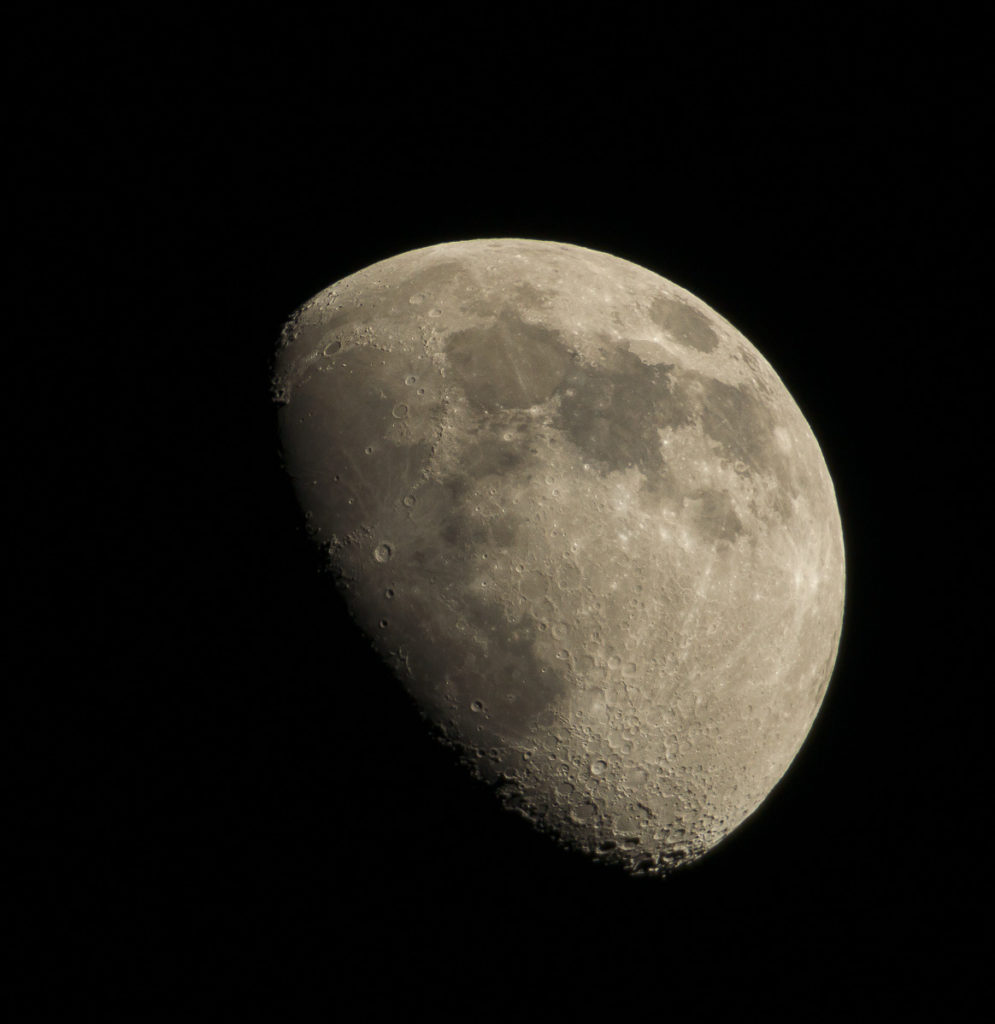
Is it still worth buying the Tokina AT-X SD 150-500 mm f/5.6 today? As with extreme wide-angle lenses, a lot has changed over the years in the world of long telephoto lenses. The more modern autofocus lenses are all equipped with several elements made of high-refractive, low-dispersion special glass, which outshines the SD glass used in the Tokina.

However, the latter performs surprisingly well in practice when it comes to secondary spectrum, as the chromatic aberrations are primarily lateral and can therefore be corrected almost completely and, above all, automatically in software such as Camera Raw and Capture One. Longitudinal aberrations (bokeh fringing) and purple fringing fortunately remain inconspicuous. Distortion and vignetting also remain very discreet, with the latter only noticeable at open aperture and longest focal length.

While the designers have managed to control color aberrations very well without reaching the performance of more modern lenses, spherical aberration and field curvature have not been completely corrected. Images taken at maximum aperture are therefore overlaid with a certain softness, which can be advantageous for some subjects (bokeh).




The sharpness is also slightly lower at the edges than in the center of the image at all apertures, especially at shorter distances. When taking close-ups, you should therefore position your subject in the extended center if possible, or use a smaller aperture, which is easily possible with today’s digital cameras. Incidentally, the performance of my sample is optimized for the range between 300 and 400 mm. However, you can also use the open aperture at all focal lengths, even if the optimum sharpness is then only achieved at f/11.
Overall, I find the optical quality to be very good, especially since I have only used the lens on the Sony A7R so far – with a full-frame camera with “only” 24 megapixels, it should be even more impressive! Incidentally, the seven-element Tokina RMC Doubler supplied with my lens is very well matched to the Tokina AT-X SD 150-500 mm f/5.6. Stopped down one stop, this combination makes it possible to take impressive photos of the moon. And on a solid tripod, the Tokina AT-X SD 150-500 mm f/5.6 + Tokina RMC Doubler combination works with my “shutter shock” – plagued Sony A7R so well that even perfectly sharp shots are possible, which is impossible with my various mirror lenses from Canon, Minolta, and Tamron due to their lack of length and weight.
Mechanically, the Tokina is a dream and very pleasant to use. I find the combined lock for focus and focal length and the built-in tripod ring very practical. The ability to first “search” for your subject at 150 mm and then compose with a longer focal length is also great. The contrast reproduction is sufficiently high that the focus can be set precisely with the Sony A7R without focus peaking, but by using the “flickering” in the viewfinder.
The “parfocality” of the lens is also very practical. As long as the focus has been set at the longest focal length, you can change the frame without having to adjust the distance setting again. All in all, I think the Tokina AT-X SD 150-500 mm f/5.6 is really good, although it probably can’t compete with my Canon EF 100-400 mm f/4.5-5.6 L IS USM. However, the latter is 100 mm short at the long end, reducing its practical value with distant subjects such as birds and other wild animals.



